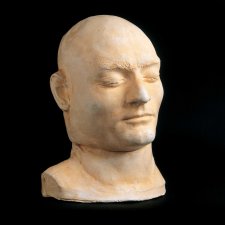Throughout Victoria on 12 January 1899, newspapers were reporting on the sensational conclusion to a grim and sordid murder mystery that had fascinated the community for weeks. The so-called 'Yarra Boot Trunk Tragedy' had unfolded about a week before Christmas 1898, when some neighbourhood boys noticed a wooden box floating in the river at Richmond. The police retrieved the box, which had 'previously been secured with a wire cord... and weighted with a large stone to sink it.' The naked body of young woman - found to have been pregnant when she died - was inside.
With no clues as to the deceased's identity, it was decided that she should be displayed at the Melbourne morgue in the hope that a member of the public might recognise her, or provide information of use to the investigation into her death. Plenty of people thereafter took the opportunity to view the corpse, although whether they did so out of a sense of civic duty is debatable. In one instance, the Age reported that 867 people had visited the morgue over a two-day period in the first week of January 1899 - by which stage the victim had been decapitated and her head preserved in metho so that the remainder of her decomposing body could be buried. 'Every class of the community was represented amongst the callers; every age except the very young, and both sexes', the article stated. Two days later, visitor numbers had spiked to 2000 in one day - not including children, 'of whom there were many'. 'The ostensible object of all these visitors was to try to identify the woman’s face, but it was perfectly evident that most of them went from mere idle motives', the paper opined.
On 12 January, after a month of considering various theories along with legitimate lines of investigation, the police were given the information they needed when a woman named Thekla Dubberke came forward and confessed to being an accessory to the murder. Dubberke, 21 years old, was described as a domestic servant in the employ of Madame Olga Radalyski, a fortune teller and masseuse supposedly of noble Russian origins and the chatelaine of a dubious tenement in Osborne Street, South Yarra. Among the services Radalyski offered from her premises were those for young women 'in trouble' - and it was from one such 'treatment' that the now identified victim, Mabel Ambrose, had died on 14 December. Mabel’s boyfriend and the cause of her trouble, Travice Tod, a local estate agent, had orchestrated the placing of her body in the trunk and its subsequent dumping in the river.
Tod and Radalyski were promptly arrested, tried and found guilty of murder, but then had their death sentences commuted to imprisonment with hard labour. Just as quickly, wax figures of the primary players in the Yarra Boot Trunk Tragedy were exhibited at Kreitmayer’s Waxworks on Bourke Street in a display highlighting 'the dark side of the hidden life of the marvellous city of Melbourne.'















